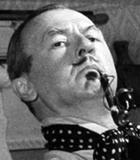
Committed and artistic agitator whooping Germany in the early twentieth century painter, cartoonist Grosz began as a peculiar style of strong social criticism, a trend exacerbated by the traumatic experience of World War II. In 1917 he founded, together with John Heartfield and Wieland brothers, Malik publishing subversive, where he published drawings and writings that led him sometimes to justice. Pushed by the disenchantment with society around him, joined the Berlin Dada group and participated with Heartfield and Otto Dix at the Erste Internationale Dada-Messe 1920. Soon after he became the main protagonist of the New Objectivity. During the twenties production reflects a deep disgust with post-war Germany. The modern metropolis has become the recurring theme of his work and, as a contemporary critic Bosco incisive and keen sense of observation tone reflected his surroundings into works of moralizing. Maybe it was the artist who did the most authoritative chronicle of Berlin in those years. Today, one of the main films we have of Germany's Weimar Republic is the one that has left us with his scathing caricatures Grosz and masterful recreation of the life of the Berlin streets.




